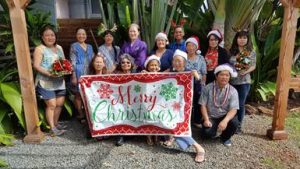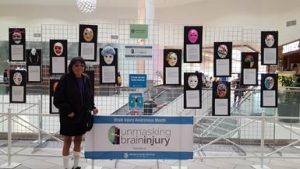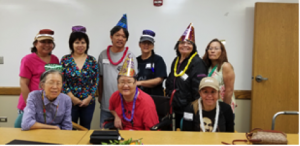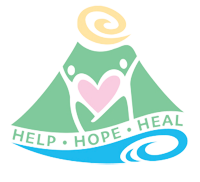Val
Take Two
In Take One of my life, I was an LPN working at State Hospital. I was going to school and was just 2 months away from getting my RN license. Between work, school and activities with my hula halau, I was never home.
My story really begins with my Take Two. Take Two, is a second chance where you can do better than you did in Take One. Like when someone is making a movie.
I was injured at work when a door buzzer triggered a patient’s outburst. During his explosion he shoved me into a pillar, injuring my head and shoulder.
My experience as a nurse may seem to be an advantage, but it did not mean the challenges were any fewer and at times my nursing may have been a fault. I feel that after any type of injury what you do next plays a vital role in your recovery.
I sought medical attention immediately and was diagnosed with whiplash. Days turned into weeks and I continued to have symptoms inconsistent with whiplash. After 6 weeks the doctor scheduled me for an MRI. Two days before the MRI, I had a big stroke. The stroke was a result of the doctor missing a diagnosis of concussion from my head hitting the pillar.
It was a slow recovery process, but I knew that I did not want to remain in bed, unable to walk, unable to talk, unable to do the things I enjoyed. I knew I wanted to find activity that would give me more to do than just staying home and watching tv.
This is when my doctor gave me a list of groups that I may be interested in. I began with what I could do while still having challenges of my own.
I called three groups on the list. Two of the groups involved work with children. I knew at this time, not having good balance or being able to move fast, doing something with younger kids would be unsafe and difficult.
The 3rdgroup I called was Hoʻo Ikaika, a peer mentoring group for adults after a TBI. After my first interview with Hoʻo Ikaika I thought I would give this a try. This proved to be a great experience that would give me more opportunities to find different challenges.
Hoʻo Ikaika connected me to DVR who trained me on computer skills. In Take One, as a nurse, I put data into the computer. In Take Two, as a survivor, I used the computer to research health needs. I found the therapy that helped me be able to walk on my own. I also make documents for the TBI Support Group.
There are 2 different brain injury support groups housed at Rehab. Brain Injury Association of Hawaii and Hui Malama Poʻo. I belong to Hui Malama Poʻo. With, Hui Malama Poʻo, I and the other members share aloha with other brain injury survivors by making seasonal cards for people just being admitted to Rehab and have spent time visiting with some of the patients. We also support each other by meeting outside of our support group meeting times to build a social network.
Further benefit from Hoʻoikaika, was attending a Rehab Hospital open house/health fair. While there, I talked to a Rehab director who referred me to a therapist. This was the beginning of me getting services from Rehab to help in my recovery process. It took a little over 3 years, but I am able to do more things every day.
Unfortunately, HoʻIikaika ended. However, through volunteer work at the Hawaii Neurotrauma Registry and Hui Malama Poʻo we continue to provide support, activities and share hope to encourage anyone with an injury or disability to look past their injury and lead a lifestyle that will help not only themselves but others that may follow.




